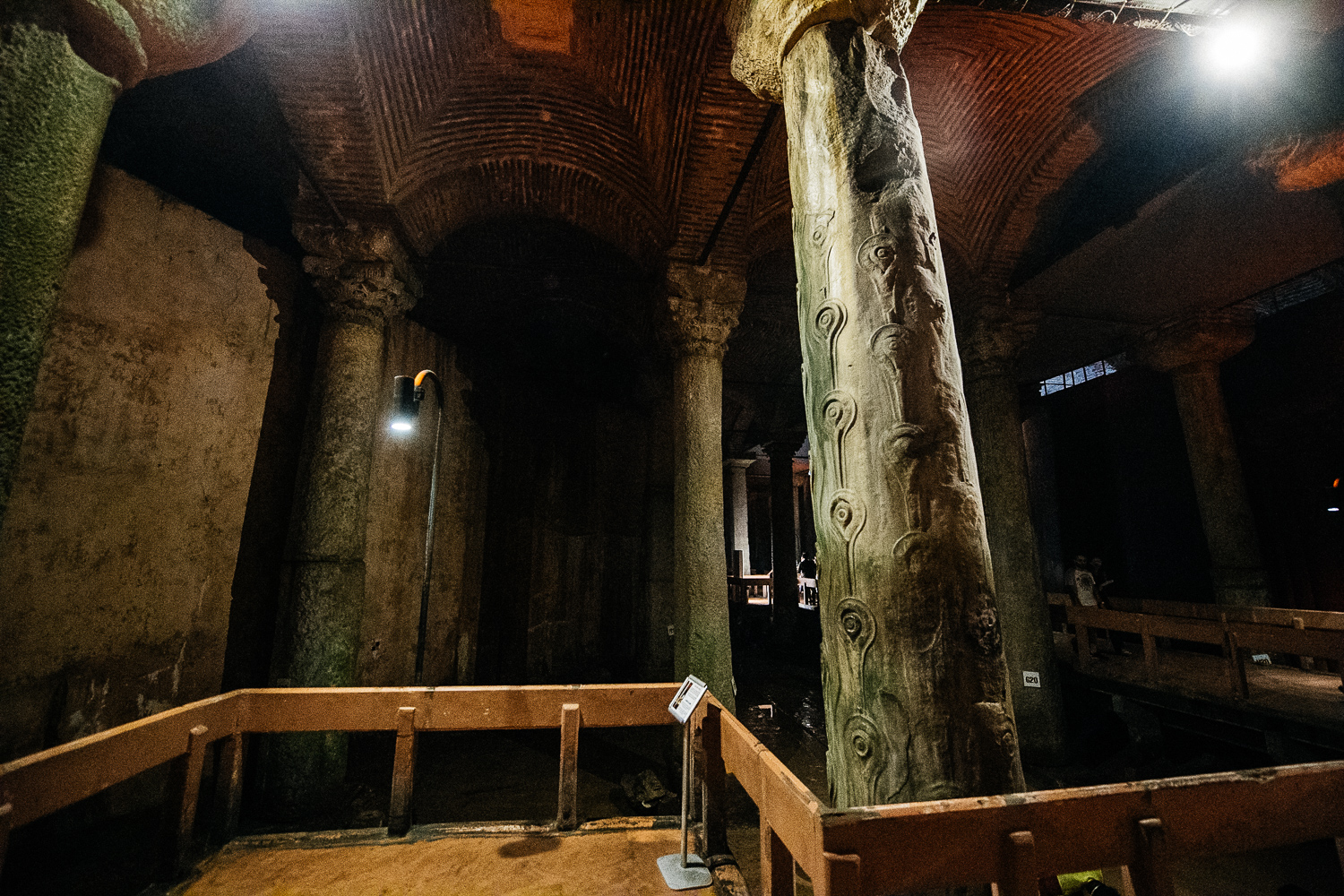New Rome. Byzantium. Constantinople. Istanbul.
The city that today is the largest of Turkey has been known by many names throughout the centuries. The metropolis of 13 million people is divided between two continents. It’s known at the door to the east, or the west, I suppose, depending on which way you are coming from.
The center of tourist attractions in the city is Sultanahmet Square. On one side you have Hagia Sophia, on the other the Blue Mosque, and right beside that the Hippodrome, all a hop and skip away from the majestic Topkapi Palace. What you don’t see - and I walked past it on my first visit to Istanbul - is that right next to Hagia Sophia: an underground forest of Roman columns called Basilica Cisterna.
Thousands of years ago cities where walled to keep invaders out. Some of the ancient city walls can still be seen in Istanbul. The same way walls kept invaders out, it also kept people inside. And when you can’t invade a city what do you do? A siege. Sieges where a common thing back then. Invaders would cut supplies lines as long as they could until the city surrendered. That’s why you had to always be prepared and stock up. And what’s the most important thing to stock?
Water.
That’s what the Basilica Cistern was built for. This beautiful construction can hold 100 thousand tons of water and was the main supply to the palace and city for centuries.
And it’s underground, that’s why you can only see the entrance from the street.
On this sidewalk is the entrance to the underground marvel that is the Basilica Cistern.
Once you go in, the first thing you see are the columns and the board walk built for tourists to visit the place.
The Basilica Cistern is called that way because it was built on the grounds where a huge basilica used to stand.
Up until 1985 visitors used boats to explore the place. If you have watched the James Bond movie From Russia With Love, you know what I’m talking about. If you haven’t, go watch it. In 1985 there was a big restoration process and they added the boardwalks. It makes it a lot easier and convenient for tourists but I think takes away a bit of the mood.
The place has also been featured in Assassin’s Creed Brotherhood and in the final moments of Dan Brown’s Inferno. I’m a big fan of the AC franchise and you’ll be seeing a lot of references to locations in the series in this blog.
Obviously the place felt and smelled very humid.
A line of tourists waits to take a picture in Turkish traditional clothing.
The cistern was built with reused materials from other sites in the Roman empire. In the Basilica Cistern you’ll be able to see Doric, Ionic and Corinthian columns.
When we visited they had drained to water for cleaning, so we didn’t get the full experience.
A lot of mud gets stuck in the bottom and needs to be removed periodically. It is said that in 1985 during the last major restoration 50 thousand tons of mud were removed. That’s a lot of mud.
The Medusa Columns
In the Basilica Cistern there are a total of 336 columns and a few of them stand out.
In one corner there are two columns that have a Medusa head base. In Greek mythology Medusa was one of the Gorgon sisters and anyone that looked straight into her eyes would immediately be turned to stone. Romans would add Medusa statues to monuments as guardians for protection. Legend says that these two heads were placed here for that reason and that they are not sitting upright so they can’t turn anyone to stone.
However reality seems to be much simpler. The whole cistern was built with reused material from all over the Roman Empire. That’s why each column look different from the other. And the Medusa heads? Well, they just put them there because of their size. They fit perfectly under the columns.
Medusa head was laid sideways to better balance the column it holds.
The two Medusa heads are one right beside the other and it’s the only part of the board walk where you can descend to ground level.
The Hen’s Eye Column
Another special column is the Hen’s Eye Column, also known as the Peacock Eye Column or Tears Column. It’s named like that because of the engravings it has that look like crying eyes. An ancient text says that it is a tribute to the hundreds of slaves that lost their life during the construction of the Basilica Cistern.
In one side of the Basilica Cistern is a column engraved in tears that represent all the lives lost in the construction of this place.
These markings represent eyes crying. (Photo by Ricardo Diez Baeza)
Unfortunately when we visited the cistern it was dry, but that didn’t take away the beauty of the construction. Now I’ll have to go back to see it full of water.
This photos is from 2008 when my friend Ricardo went and the cistern had water. (Photo by Ricardo Diez Baeza)












